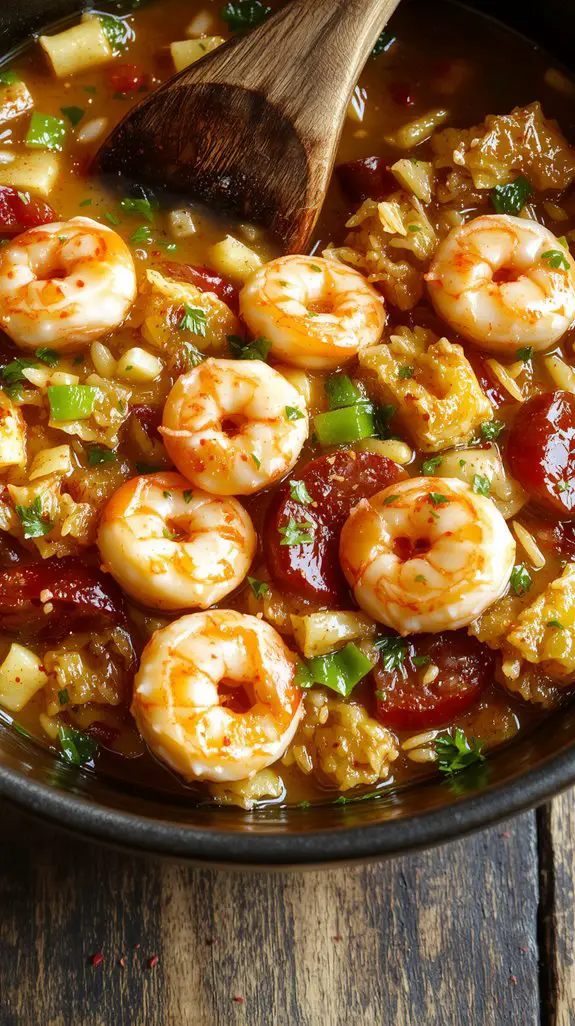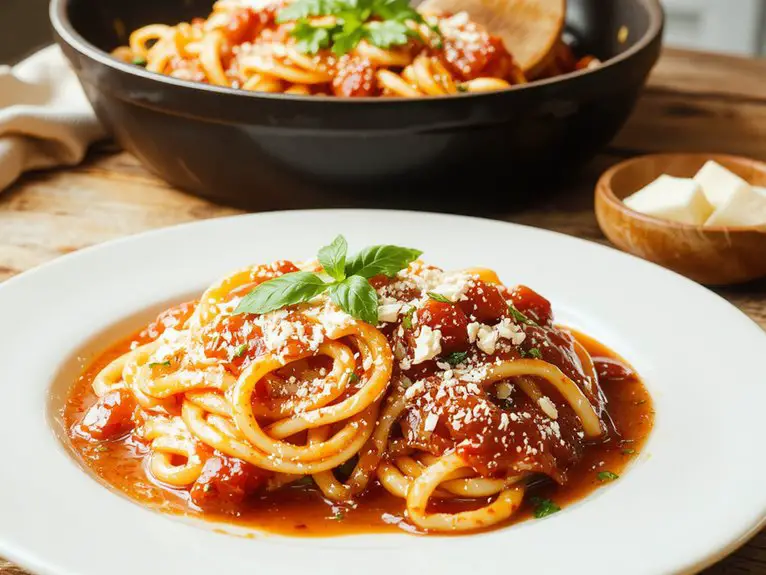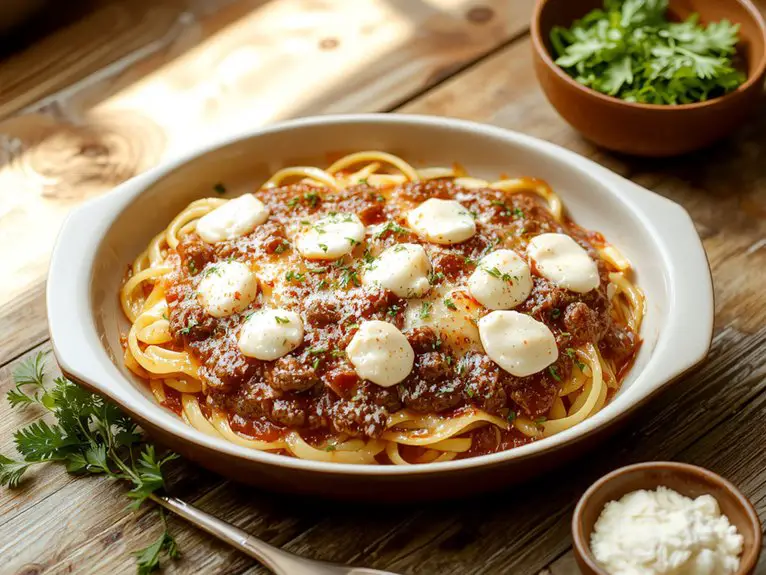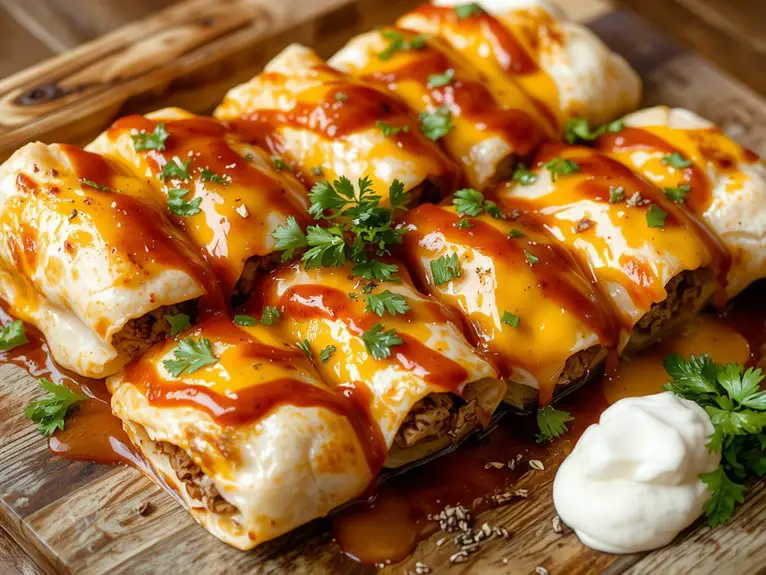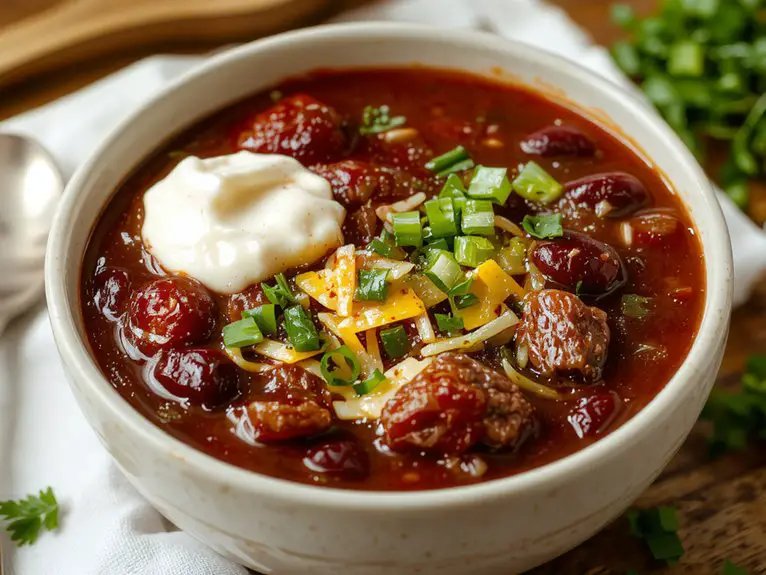Recipe
This jambalaya is the kind of dish that’ll make you feel like a Louisiana legend in your own kitchen—trust me, it’s foolproof and packed with so much flavor, you’ll be dreaming about it for days. What sets it apart? The holy trinity of onions, bell peppers, and celery, toasted Cajun spices, and a mix of smoky sausage, tender chicken, and plump shrimp that come together for a one-pot wonder.
I’ve made this for everything from family gatherings to weeknight dinners, and it never fails to impress. Imagine this: a rich tomato base, perfectly seasoned rice, and a symphony of textures that’ll have you reaching for seconds (and thirds).
Seriously, once you try it, you’ll understand why it’s a staple in my kitchen—and soon to be in yours. Let’s get cooking!
Ingredients
Jambalaya is all about building layers of flavor, and the right ingredients are key to achieving that depth.
Start with the essentials—like the “holy trinity” of Cajun cooking (onion, celery, and bell pepper)—and build from there.
Don’t skimp on the spices, as they’re the soul of this dish. Here’s what you’ll need, along with some insider tips and swaps to make it your own.
- Olive oil or vegetable oil: Essential for sautéing the base ingredients. Use a neutral oil if you want the spices to shine.
- Andouille sausage: Smoky and spicy, this is non-negotiable for authentic flavor. If unavailable, use kielbasa or chorizo as a substitute.
- Chicken thighs: Boneless, skinless thighs stay juicy and tender. Chicken breasts work too, but they can dry out more easily.
- Shrimp: Large, peeled, and deveined shrimp add final flair. Use pre-cooked shrimp to save time—just add them at the very end.
- The holy trinity (onion, celery, green bell pepper): The foundation of Cajun cooking. Dice evenly for even cooking.
- Garlic: Minced fresh garlic adds depth—don’t skip it!
- Canned diced tomatoes: Use fire-roasted for extra smokiness.
- Chicken stock: Low-sodium is best so you can control the seasoning.
- Long-grain white rice: Basmati or jasmine rice works too, but avoid short-grain rice for the right texture.
- Spices (paprika, cayenne, thyme, oregano, bay leaves): These are the heart of jambalaya. Use smoked paprika for an extra layer of flavor, and adjust cayenne to your heat preference.
- Green onions and parsley (for garnish): Fresh herbs add brightness and color—don’t skip these finishing touches.
For extra flair, add a splash of hot sauce before serving or a squeeze of fresh lemon juice to brighten the flavors.
How to Make the Best Authentic Jambalaya Recipe
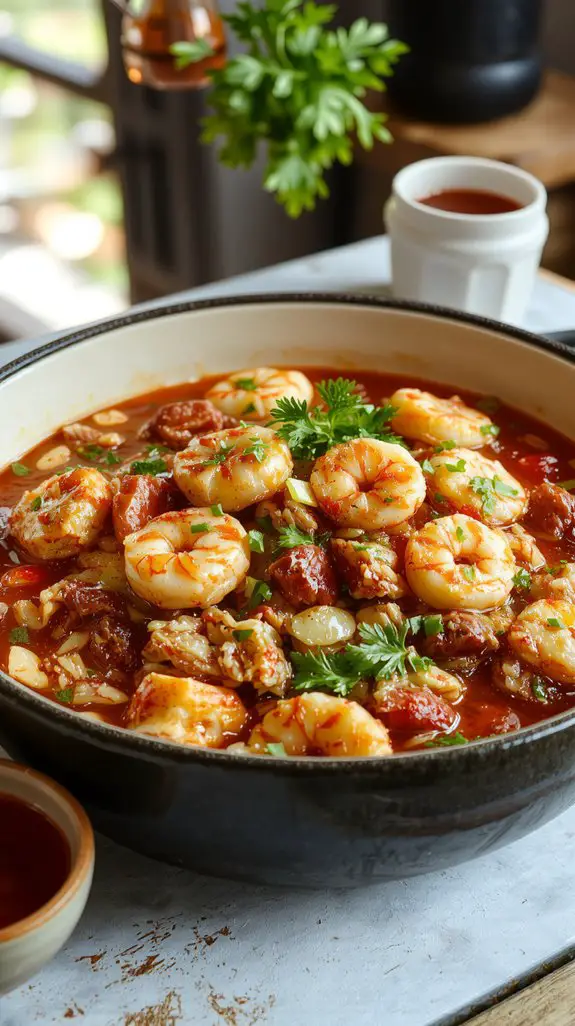
- Prepare your ingredients: Dice the chicken, sausage, and vegetables beforehand to streamline the cooking process. Having everything ready guarantees seamless shifts between steps and prevents overcooking.
- Sear the sausage and chicken: Heat oil in a large pot or Dutch oven over medium-high heat. Brown the sausage first to render its fat, then add the chicken. This builds layers of flavor and guarantees both proteins are cooked evenly.
- Sauté the trinity: Add onions, bell peppers, and celery to the pot, cooking until softened. This aromatic base is essential for authentic flavor—don’t rush it!
- Toast the rice: Stir in uncooked rice and cook for 1-2 minutes until it’s lightly toasted. This step enhances the rice’s nutty flavor and helps it absorb the broth evenly later.
- Add seasonings and tomatoes: Incorporate Cajun seasoning, thyme, and bay leaves, followed by diced tomatoes. Let the mixture simmer briefly to meld the flavors.
- Pour in the broth: Slowly add chicken broth, scraping the bottom of the pot to lift any tasty browned bits. This liquid will cook the rice and infuse it with richness.
- Simmer uncovered: Bring the mixture to a boil, then reduce the heat to low. Cover and simmer for 20-25 minutes, stirring occasionally to prevent sticking. The rice should be tender and the liquid mostly absorbed.
- Add shrimp (if using): If including shrimp, toss them in during the last 5 minutes of cooking. They’ll turn pink and opaque when done—overcooking makes them rubbery.
- Rest before serving: Turn off the heat and let the jambalaya sit for 5 minutes. This allows the flavors to deepen and the rice to firm up slightly.
- Garnish and serve: Sprinkle with chopped parsley or green onions for freshness. Serve with hot sauce on the side for an extra kick.
Pro Tip: If you’re short on time, use pre-cooked sausage and shrimp to cut down on prep.
Watch-Out Warning: Avoid stirring the rice too much after adding the broth—it can break the grains and make the dish mushy.
Nutrition
Jambalaya is a flavorful dish packed with protein and carbs. Below is the nutritional breakdown per serving.
| Nutrient | Amount per Serving |
|---|---|
| Calories | 345 |
| Protein | 24g |
| Carbohydrates | 32g |
| Fat | 12g |
| Fiber | 3g |
| Sugar | 5g |
| Sodium | 850mg |
Chef Tips
If you’re aiming for the perfect balance of flavors, I’d recommend sautéing the trinity—onions, celery, and bell peppers—until they’re soft but not browned.
Don’t rush the roux; let it darken slowly for depth.
Use smoked sausage for extra richness, and toast the rice lightly before adding liquid.
Stir minimally to avoid mushiness.
Adjust heat carefully—low and slow wins.
Finish with fresh herbs for brightness.
Frequently Asked Questions
What Is the Origin of Jambalaya?
I’ve learned jambalaya’s origin traces back to Louisiana, blending French, Spanish, and West African influences. It’s a mix of seasonings, meats, and rice, created when cultures met in the New Orleans area centuries ago.
Can Jambalaya Be Made Vegetarian?
Yes, I can make jambalaya vegetarian by using vegetable broth instead of chicken or seafood stock and replacing meat with hearty ingredients like beans, tofu, or mushrooms. It’ll still have that rich, spicy flavor I crave.
How Long Does Jambalaya Last in the Fridge?
I’ll keep my jambalaya in the fridge for 3–4 days if stored in an airtight container. I make sure it’s cooled completely before refrigerating to keep it fresh and safe to reheat later.
Is Jambalaya Gluten-Free?
It depends on the ingredients I use. Traditional jambalaya can be gluten-free if I avoid gluten-containing sausage or thickeners. I always check labels for hidden gluten and stick to rice, veggies, and safe proteins.
Can Jambalaya Be Frozen for Later Use?
Jambalaya freezes well for later use. I’d let it cool completely, then store it in an airtight container or freezer bag. When reheating, I’d thaw it overnight in the fridge and warm it on the stove for best results.

